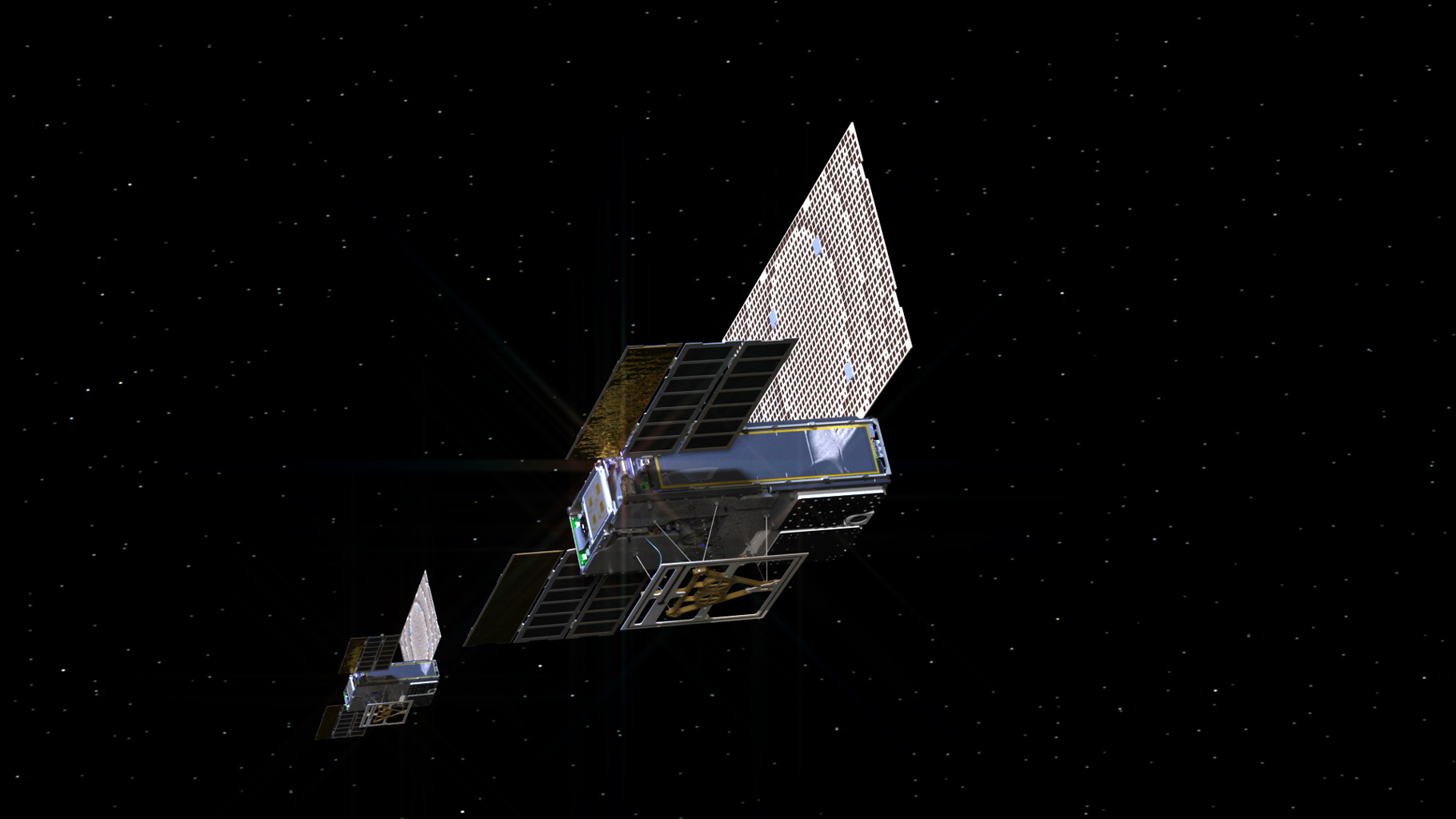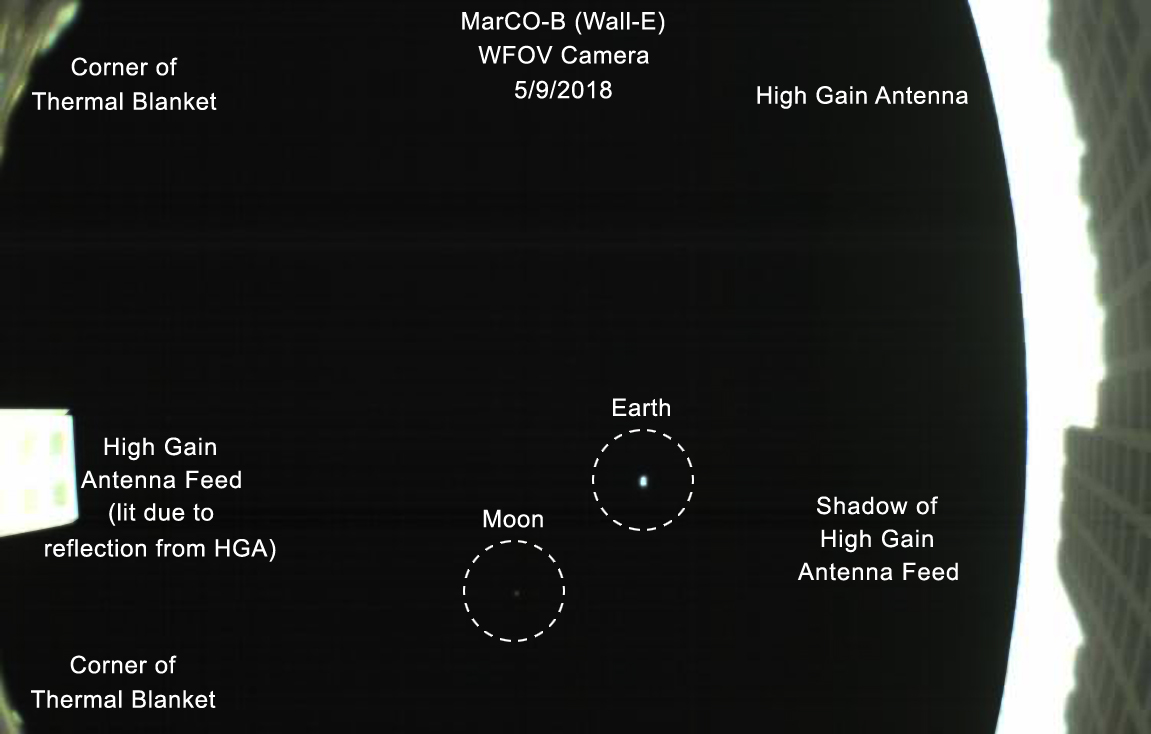Mission Overview
InSight (Interior Exploration using Seismic Investigations, Geodesy and Heat Transport) is a proposed NASA Discovery Program mission that will place a single geophysical lander on Mars to study its deep interior. But InSight is more than a Mars mission - it is a terrestrial planet explorer that will address one of the most fundamental issues of planetary and solar system science - understanding the processes that shaped the rocky planets of the inner solar system (including Earth) more than four billion years ago.
By using sophisticated geophysical instruments, InSight will delve deep beneath the surface of Mars, detecting the fingerprints of the processes of terrestrial planet formation, as well as measuring the planet's "vital signs": Its "pulse" (seismology), "temperature" (heat flow probe), and "reflexes" (precision tracking).
InSight seeks to answer one of science's most fundamental questions: How did the terrestrial planets form?
Why Mars?
Previous missions to Mars have investigated the surface history of the Red Planet by examining features like canyons, volcanoes, rocks and soil, but no one has attempted to investigate the planet's earliest evolution - its building blocks - which can only be found by looking far below the surface.
Because Mars has been less geologically active than the Earth (for example, it does not have plate tectonics), it actually retains a more complete record of its history in its own basic planetary building blocks: its core, mantle and crust.
By studying the size, thickness, density and overall structure of the Red Planet's core, mantle and crust, as well as the rate at which heat escapes from the planet's interior, the InSight mission will provide glimpses into the evolutionary processes of all of the rocky planets in the inner solar system.
In terms of fundamental processes that shape planetary formation, Mars is a veritable "Goldilocks" planet, because it is big enough to have undergone the earliest internal heating and differentiation (separation of the crust, mantle and core) processes that shaped the terrestrial planets (Earth, Venus, Mercury, Moon), but small enough to have retained the signature of those processes over the next four billion years. Within its own structural signature, Mars may contain the most in-depth and accurate record in the solar system of these processes.
The InSight mission will follow the legacy of NASA's Mars Phoenix mission and send a lander to Mars, which will delve deeper into the surface than any other spacecraft - to investigate the planet's structure and composition as well as its tectonic activity as it relates to all terrestrial planets, including Earth.
Objectives
The InSight mission will seek to understand the evolutionary formation of rocky planets, including Earth, by investigating the interior structure and processes of Mars. InSight will also investigate the dynamics of Martian tectonic activity and meteorite impacts, which could offer clues about such phenomena on Earth.
Spacecraft and Payload
The InSight mission is similar in design to the Mars lander that the Phoenix mission used successfully in 2007 to study ground ice near the north pole of Mars. The reuse of this technology, developed and built by Lockheed-Martin Space Systems in Denver, CO, will provide a low-risk path to Mars without the added cost of designing and testing a new system from scratch.
The InSight lander will be equipped with two science instruments that will conduct the first "check-up" of Mars in more than 4.5 billion years, measuring its "pulse", or internal activity; its temperature; and its "reflexes" (the way the planet wobbles when it is pulled by the Sun and its moons). Scientists will be able to interpret this data to understand the planet's history, its interior structure and activity, and the forces that shaped rocky planet formation in the inner solar system.
The science payload is comprised of two instruments: the Seismic Experiment for Interior Structure (SEIS), provided by the French Space Agency (CNES), with the participation of the Institut de Physique du Globe de Paris (IPGP), the Swiss Federal Institute of Technology (ETH), the Max Planck Institute for Solar System Research (MPS), Imperial College and the Jet Propulsion Laboratory (JPL); and the Heat Flow and Physical Properties Package (HP3), provided by the German Space Agency (DLR). In addition, the Rotation and Interior Structure Experiment (RISE), led by JPL, will use the spacecraft communication system to provide precise measurements of planetary rotation.
Mission Details
One of three proposed missions competing for funding within
NASA's Discovery Program, InSight is slated for a March 2016 launch date and set to arrive on the surface of Mars in late 2016. It will rely on proven technologies used on NASA's Mars Phoenix mission, and will send a lander to the Martian surface that will spend two years investigating the deep interior of Mars - as well as the processes that not only shaped the Red Planet, but also rocky planets throughout the inner solar system.
InSight Key Dates
- Launch: March 8 - March 27, 2016
- Landing: September 20, 2016
- Surface operations: 720 days / 700 sols
- First science return: October 2016
- Instrument deployment: 60 sols (including 20 sols margin)
- Data volume over 1 Martian year: More than 29 Gb (processed seismic data posted to the Web in 2 weeks; remaining science data less than 3 months, no proprietary period)
- End of Mission: September 18, 2018
Science Objectives
- InSight's primary objective is to uncover how a rocky body forms and evolves to become a planet. Generally, a rocky body begins its formation through a process called accretion. As the body increases in size, its interior heats up and melts. As it subsequently cools and recrystallizes it evolves into what we know today as a terrestrial planet, containing a core, mantle and crust. While all of the terrestrial planets share similar structures and their bulk compositions are roughly the same as the meteoritic material from which they were formed, they are by no means uniform. Each of the terrestrial planets reached their current formation and structure through a process known as differentiation, which is poorly understood. InSight's goal is to solve the mystery of differentiation in planetary formation - and to bridge the gap of understanding that lies between accretion, and the final formation of a terrestrial planet's core, mantle, and crust.
- The mission's secondary objective is to conduct an in-depth study of tectonic activity and meteorite impacts on Mars, both of which could provide valuable knowledge about such processes on Earth.
To achieve each of these objectives, InSight will conduct six investigations on and below the surface of Mars to uncover the evolutionary history that shaped all of the rocky planets in the inner solar system.
- Determine the size, composition, physical state (liquid/solid) of the Martian core
Determine the thickness and structure of the Martian crust
Determine the composition and structure of the Martian mantle
Determine the thermal state of Mars' interior
Measure the magnitude, rate and geographical distribution of Mars' internal seismic activity
Measure the rate of meteorite impacts on the surface of Mars
Technology
The InSight Lander will carry three instruments to the surface of Mars to take the first-ever in-depth look at the planet's "vital stats": its pulse, or internal activity, as measured by the
SEIS instrument; its temperature as measured by the
HP3 instrument; and its reflexes as measured by the
RISE instrument. Together, the data will provide essential clues about the evolution of not just Mars, but also all the terrestrial planets.
SEIS: Seismic Experiment for Interior Structure - To capture Mars' pulse, or its internal activity, InSight will carry a seismometer called SEIS to the surface of the Red Planet. SEIS will take precise measurements of quakes and other internal activity on Mars to better understand the planet's history and structure.
HP3: Heat Flow and Physical Properties Package - To take Mars' temperature, a key indicator of planetary evolution, InSight will deploy a heat flow probe on the surface of Mars. The instrument, known as HP3, will hammer five meters into the Martian subsurface, deeper than all previous arms, scoops, drills and probes, to learn how much heat is coming from Mars' interior and reveal the planet's thermal history.
RISE: Rotation and Interior Structure Experiment - To track Mars' reflexes, or the way it wobbles when it is pulled by the sun, an investigation called RISE will precisely measure the Doppler shift and ranging of radio communications sent between the InSight lander and Earth. By tracking wobble, scientists can determine the distribution of the Red Planet's internal structures and better understand how the planet is built.
Cameras: Insight will incorporate a camera, similar to the "
Navcam" engineering cameras onboard the Mars Exploration Rovers (
MER), mounted on the arm of the lander that will serve to capture black and white images of the instruments on the lander's deck and a 3-D view of the ground where the seismometer and heat flow probe will be placed. It will then be used to help engineers and scientists guide the deployment of the instruments to the ground. With a 45-degree field of view, the camera will also provide a panoramic view of the terrain surrounding the landing site.
A second similar camera, with a wide-angle 120-degree field of view lens like the "
Hazcam" cameras on
MER, will be mounted under the edge of the lander's deck and will provide a complementary view of the instrument deployment area.





